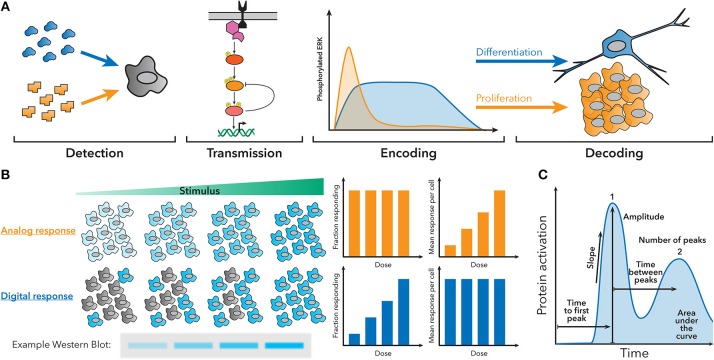Figure 1.
Fundamentals of dynamic encoding and decoding. (A) Cells can encode information about the signals they encounter as dynamic patterns of signaling pathway activation. These patterns can then be decoded to produce a specific response. For example, NGF creates sustained ERK activation, which leads to differentiation, while EGF creates transient ERK activation, which leads to proliferation. (B) Population-level measurements, such as a western blot, can hide the behavior of single cells in the underlying system. For example, an analog or digital response could produce similar western blots, despite having different amounts of active cells and activity per cell. (C) Examples of some features of dynamic traces that can be used to encode information.

